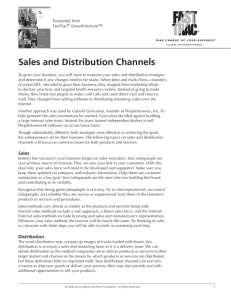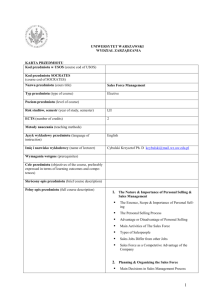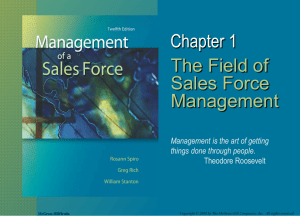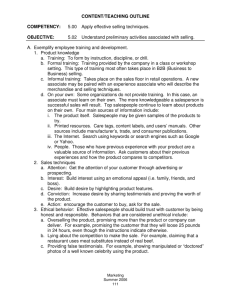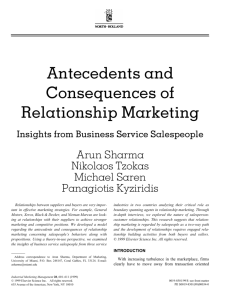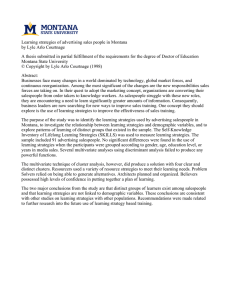Five Approaches to Sales Training
advertisement
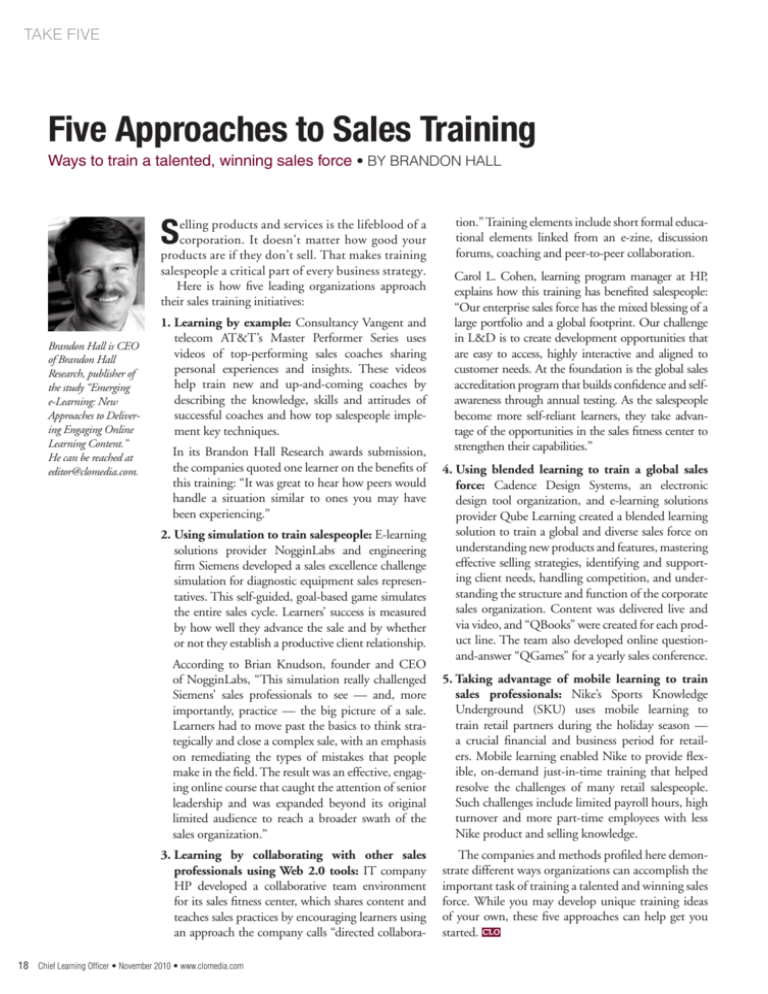
TAKE FIVE Five Approaches to Sales Training Ways to train a talented, winning sales force • BY BRANDON HALL S elling products and services is the lifeblood of a corporation. It doesn’t matter how good your products are if they don’t sell. That makes training salespeople a critical part of every business strategy. Here is how five leading organizations approach their sales training initiatives: Brandon Hall is CEO of Brandon Hall Research, publisher of the study “Emerging e-Learning: New Approaches to Delivering Engaging Online Learning Content.” He can be reached at editor@clomedia.com. 1. Learning by example: Consultancy Vangent and telecom AT&T’s Master Performer Series uses videos of top-performing sales coaches sharing personal experiences and insights. These videos help train new and up-and-coming coaches by describing the knowledge, skills and attitudes of successful coaches and how top salespeople implement key techniques. In its Brandon Hall Research awards submission, the companies quoted one learner on the benefits of this training: “It was great to hear how peers would handle a situation similar to ones you may have been experiencing.” 2. Using simulation to train salespeople: E-learning solutions provider NogginLabs and engineering firm Siemens developed a sales excellence challenge simulation for diagnostic equipment sales representatives. This self-guided, goal-based game simulates the entire sales cycle. Learners’ success is measured by how well they advance the sale and by whether or not they establish a productive client relationship. According to Brian Knudson, founder and CEO of NogginLabs, “This simulation really challenged Siemens’ sales professionals to see — and, more importantly, practice — the big picture of a sale. Learners had to move past the basics to think strategically and close a complex sale, with an emphasis on remediating the types of mistakes that people make in the field. The result was an effective, engaging online course that caught the attention of senior leadership and was expanded beyond its original limited audience to reach a broader swath of the sales organization.” 3. Learning by collaborating with other sales professionals using Web 2.0 tools: IT company HP developed a collaborative team environment for its sales fitness center, which shares content and teaches sales practices by encouraging learners using an approach the company calls “directed collabora- 18 Chief Learning Officer • November 2010 • www.clomedia.com tion.” Training elements include short formal educational elements linked from an e-zine, discussion forums, coaching and peer-to-peer collaboration. Carol L. Cohen, learning program manager at HP, explains how this training has benefited salespeople: “Our enterprise sales force has the mixed blessing of a large portfolio and a global footprint. Our challenge in L&D is to create development opportunities that are easy to access, highly interactive and aligned to customer needs. At the foundation is the global sales accreditation program that builds confidence and selfawareness through annual testing. As the salespeople become more self-reliant learners, they take advantage of the opportunities in the sales fitness center to strengthen their capabilities.” 4. Using blended learning to train a global sales force: Cadence Design Systems, an electronic design tool organization, and e-learning solutions provider Qube Learning created a blended learning solution to train a global and diverse sales force on understanding new products and features, mastering effective selling strategies, identifying and supporting client needs, handling competition, and understanding the structure and function of the corporate sales organization. Content was delivered live and via video, and “QBooks” were created for each product line. The team also developed online questionand-answer “QGames” for a yearly sales conference. 5. Taking advantage of mobile learning to train sales professionals: Nike’s Sports Knowledge Underground (SKU) uses mobile learning to train retail partners during the holiday season — a crucial financial and business period for retailers. Mobile learning enabled Nike to provide flexible, on-demand just-in-time training that helped resolve the challenges of many retail salespeople. Such challenges include limited payroll hours, high turnover and more part-time employees with less Nike product and selling knowledge. The companies and methods profiled here demonstrate different ways organizations can accomplish the important task of training a talented and winning sales force. While you may develop unique training ideas of your own, these five approaches can help get you started. CLO


